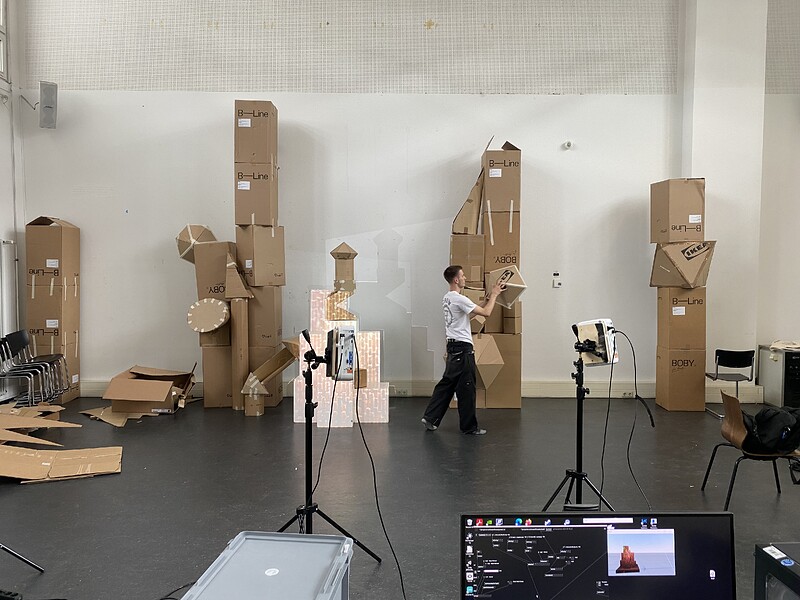Hey,
Thanks for the reply. You can find the festival here: https://www.instagram.com/dasgrossebueffeln/ It is a very nice, small festival of people who do it for the love of music. It is non-commercial and we are expecting about 400-700 people. If you are interested, everyone is very welcome.
The last few days we have been working hard on our stage, mostly testing and practicing the tools we have. We mostly worked with the help patches mentioned in the first post and found them straightforward and easy to work with. We had to tinker a bit and learned a few things.
One question here: Is there a way to nudge the points when calibrating the projectors? We used three projectors on our test sculpture and we weren’t able to get them perfectly aligned. It is quite possible that we lose some accuracy in the 3D scanning process, but we wondered how we could get even better results. We also thought about the reprojection error. How important is it to keep it as low as possible? At first we were very focused on that, but later we tried to look more for accuracy on the model and didn’t mind it too much. We also felt that as we added more points to tighten up our calibration, the error increased. But we also noticed that the more we practised, the more accurate we got.
One thing we couldn’t figure out was our multi-screen setup. To use 6 projectors simultaneously, we have 2 tripplehead2go Matrox units that can send 1 signal to 3 projectors. This poses a problem because we cannot go into full screen mode to calibrate each projector separately, as full screen mode always spans all three connected projectors. This is because the PC sees the three projectors as one large display. Is there a simple way to fix the resolution of both the calibration window and the final projection to 1080x1920 without using full screen? Is there any other workaround?
Then we realised that we’ve been so busy getting the technology and infrastructure to work that we haven’t had much time to think about the content. Yesterday, in particular, we focused a lot on finding cool things to do with our sculpture.
We started by playing with virtual lights and placing objects around the scene, using the cool 3D effect that can be achieved by changing the viewer’s position in the patch to sell the illusion. We realised that in our case we are going to have quite a large crowd spread out over a 10 metre wide area. We will have to see how much we can rely on this effect and still make the illusion work for everyone.
After that we started playing around with using texture effects on our content, starting with the infamous liquish effect. We used some PBR materials and Skia textures and tried to figure out what cool effects we could play on the texture. One thing we wanted to do but couldn’t figure out how to do was to trace the edges of our sculpture with light (it’s a classic but timeless projection trick). Any tips on how to do this? I also looked into texturing with Fuse last night, but didn’t get very far. I am really looking forward to trying out fuse for cool effects, I think there is a lot to be gained.
I have attached a photo of our workspace and progress. There’s not much to see yet, but I’ll post more soon with better photos. (I might make a little youtube video, since I can only post one picture here)
I am really looking forward to your comments and tips :) Have a nice weekend everyone.
you can see the cardboard piling up next to our little test sculpture. It will be painted white and built into a big sculpture soon.

